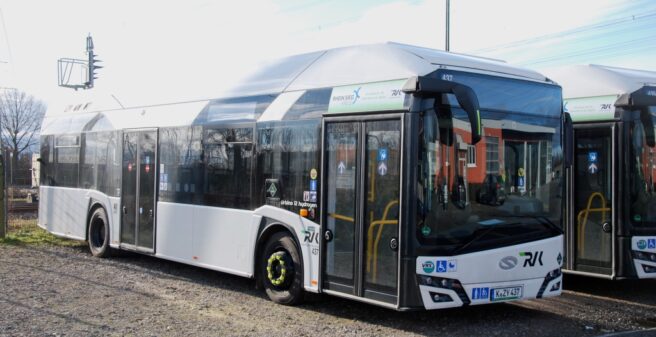
Regionalverkehr Köln GmbH (RVK) currently operates Europe’s largest fleet of fuel cell buses, RVK’s Alisa Meyer recently participated at a Solaris press event with an interesting overview presentation about the company’s activities in this field
Very briefly, the current fleet of fuel cell buses at RVK consists of:
- 2 Van Hool New A 330 FC – of 2014 vintage (coaches 400 and 500).
- 35 Van Hool New A 330 FC – from the year 2020
- 15 Solaris Urbino 12 hydrogen – from the years 2021 and 2022
- 20 further Solaris Urbino 12 hydrogen and 20 “GB Kite” from the Northern Irish manufacturer “Wrightbus” are on firm order. In addition, there is an option for another 20 “Urbino 12 hydrogen” from Solaris and another 40 “GB Kite” from Wrightbus.
In total, RVK currently has 52 buses powered by hydrogen.
How it all started at RVK with the fuel cell buses
In 2011, RVK started service with two 18-metre-long hydrogen articulated buses of the legendary type “Phileas 18” from the Dutch manufacturer APTS (APTS = Advanced Public Transport Systems) numbered 10 and 100. The “Phileas” was actually quite an excellent car, it was full of technical ideas that would have been able to really revolutionise bus construction. As an example, all the wheels of the Phlieas were steerable. This enabled it to approach the bus stop in a “parallel shift” from the middle of the carriageway and thus always stand absolutely parallel to the kerb at the bus stop.
The two Phileas were intended for urban transport in the two towns of Hürth and Brühl (both with around 50,000 inhabitants in the immediate vicinity of Cologne) and for the neighbouring town line 978 from Hürth to Cologne Central Station. They had – in this respect clearly superior to a battery electric bus – a range that allowed them to cover a whole day’s mileage on their line without refuelling.
To refuel, the two Phileas, which only travelled in Hürth or its neighbourhood, went to the “Chempark Hürth”, a chemical factory in the city. PVC (polyvinyl chloride) was produced there, and hydrogen was produced as a kind of “waste”. Nobody knew what to do with it, so it was “simply” destroyed by flaring.
At the premiere in 2011, the two Phileas drove to the “Chempark Hürth” to demonstrate how easy it is to refuel. It is true that a nozzle is not simply hooked into the vehicle’s filler neck (as we know it from petrol and diesel), but the hose from the petrol pump and the filler neck of the bus were firmly connected to each other by means of a screw cap, but otherwise everything was the same as with a conventional refuelling process. And the price for a kilogram of hydrogen was quoted at 36 cents (in 2011 !).
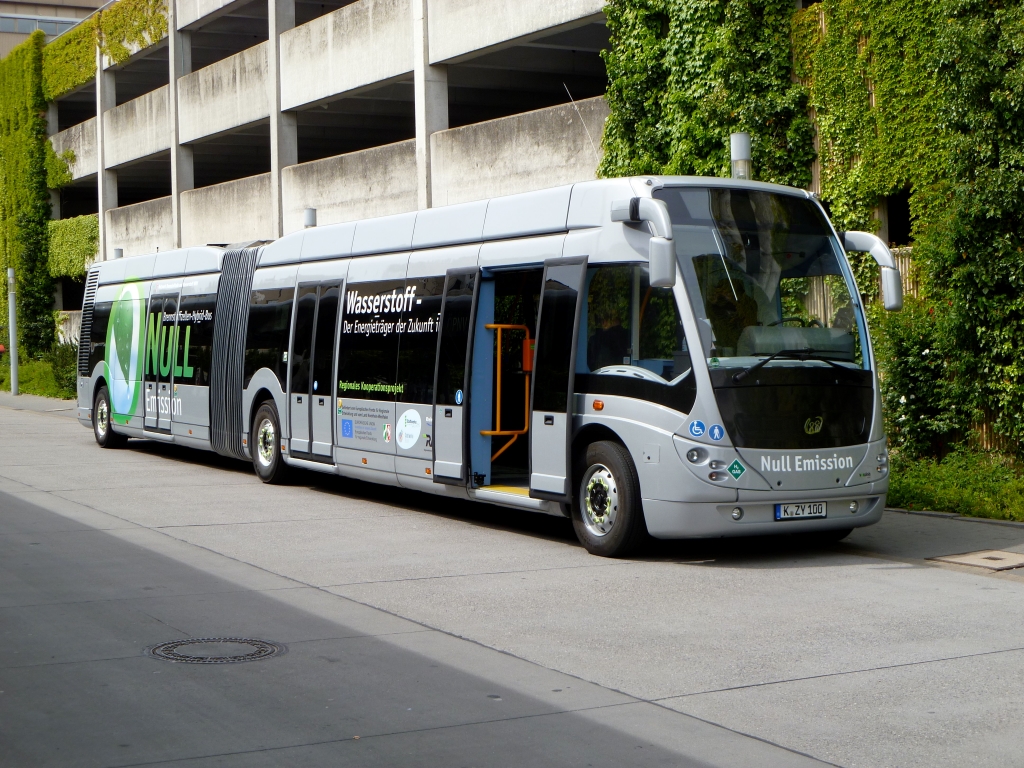
The two Phileas had only one weak point, which new technical developments have: they suffered from “Kinderziektjes” (Dutch = children’s illnesses). APTS tried as hard as they could to eliminate the “Kinderziektjes”. But they were persistent, and it took a long time to eliminate them. Too long: before they had managed to get the Phileas up and running properly, APTS ran out of money. The result we know by the ugly names of insolvency or bankruptcy.
APTS had delivered a number of double-articulated Phileas to Instanbul, where they ran on a “bus track” in the middle of an motorway, completely independent of other traffic. When they were due for retirement, Istanbul’s urban transport authority IETT ordered the replacements from a Turkish manufacturer. And the manufacturer delivered vehicles that made one rub one’s eyes in amazement. Somehow the Phileas seems to have been resurrected … which shows that the Phileas can’t have been so “wrong”.
2014: the first two Van Hool
The next attempt at hydrogen was made by the RVK in 2014, when two Belgian Van Hool of the type “New A 330 FC” arrived. They were given the internal car numbers 400 and 500 and were both ceremoniously unveiled in front of Schloss Falkenkust in Brühl. They were (and are) intended for the city bus services in Hürth and Brühl, both of which are operated by RVK on behalf of the two municpalities.
In 2014, Van Hool already had several years of experience with fuel cell buses. Although they were not able to deliver them to their home country, i.e. Europe, they were able to deliver them to the USA. And there these cars did what they were supposed to do. What works in the USA, of course, also works in Europe.
Still, the A 330 FC was so heavy that even with a length of only 12 metres it needed three axles to carry its weight within the legal limits. And for refuelling, the two buses drove (and still drive) to the Chempark in Hürth, just like the Phileas.
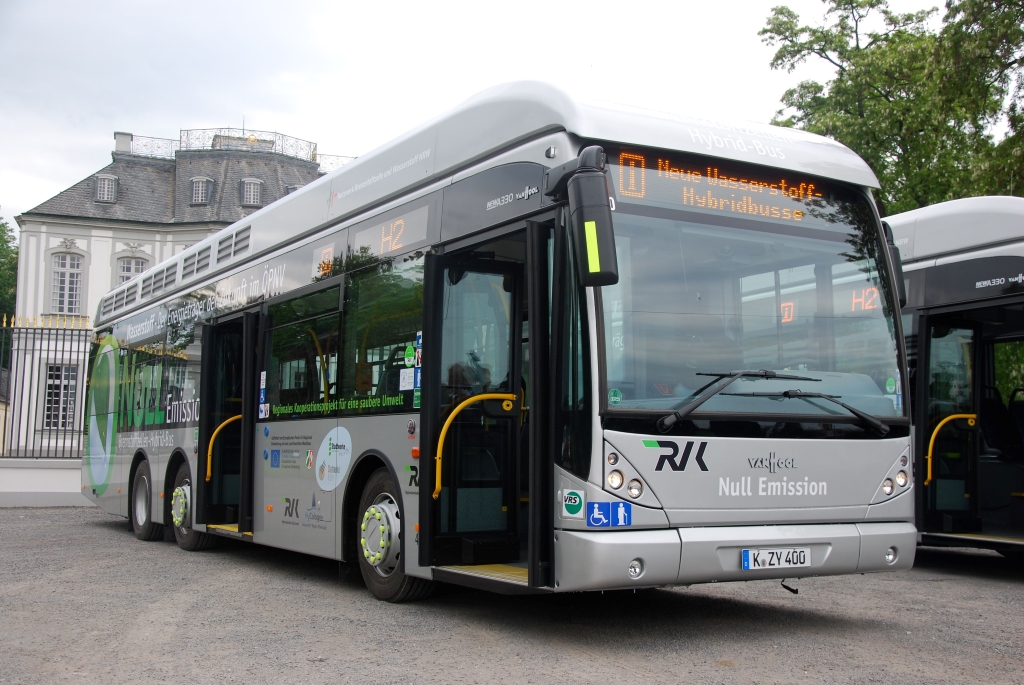
From 2020: the real start
In 2020, RVK really took off with fuel cell buses. They joined forces with the Wuppertaler Stadtwerke (WSW) and ordered 30 “New A 330 FC” for RVK and ten for WSW from Van Hool. They were all delivered in summer 2020. But alas, at RVK there were suddenly 35 wagons. How so? Well, Van Hool had ten hydrogen buses under construction for a customer in the UK in mid-2020, and that customer suddenly and unexpectedly stepped back from the contract. And RVK stepped in.
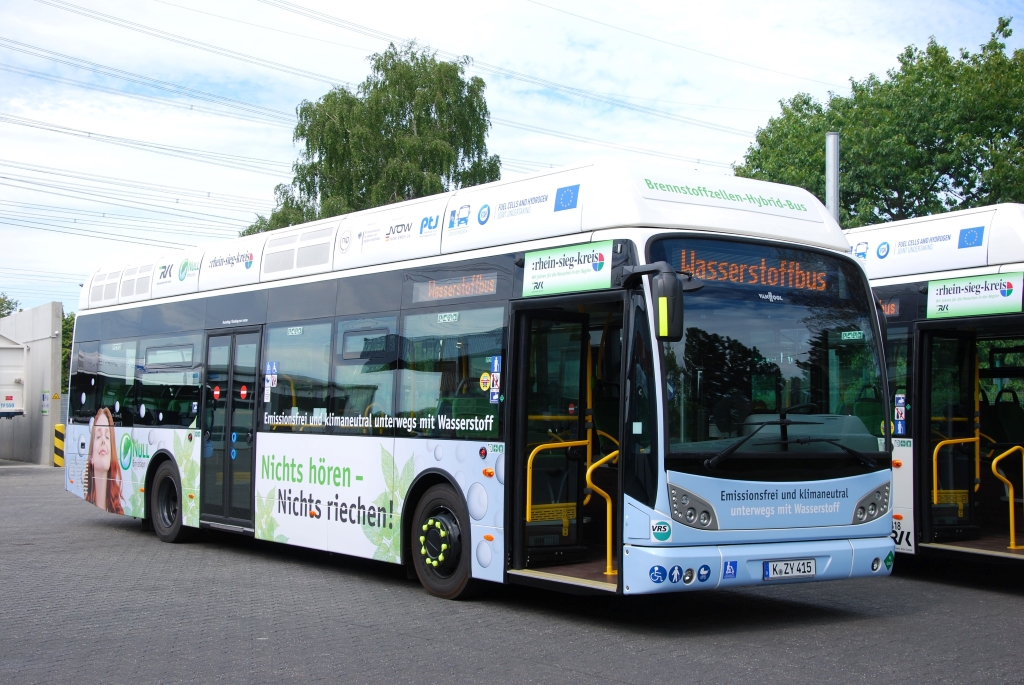
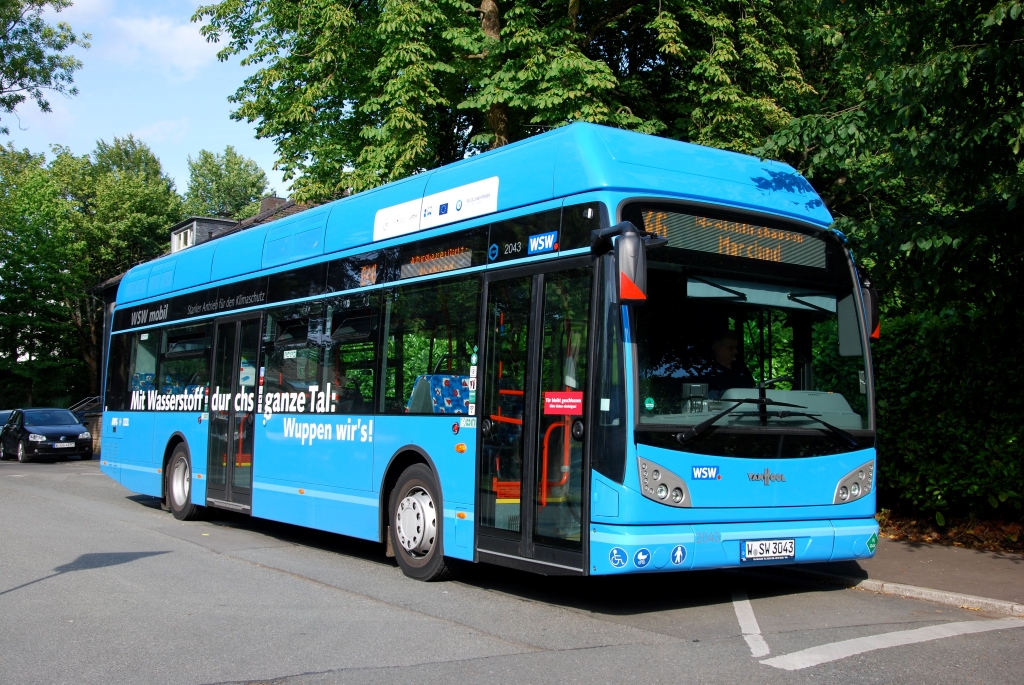
These new Van Hool New A 330 FC are clearly different from their two six-year older brothers: they have (and need) only the usual two axles. Technology has been advancing, and Van Hool has been able to reduce the weight of its hydrogen bus considerably.
While the two Phileas and the first two Van Hool were still stationed at the Hürth depot, the new coaches have now been moved to the depots in Bergisch Gladbach, Meckenheim and Wermelskirchen. At the same time, the petrol station network was significantly expanded. The depots in Meckenheim (near Bonn) and Wermelskirchen received their own filling stations, which are also supplied by tanker lorries, just like any other diesel filling station. The hydrogen comes from a well-known chemical factory in Hürth. In addition, there is a hydrogen filling station at Cologne/Bonn airport, which is not far from Bergisch Gladbach. Finally, a normal hydrogen filling station for everyone had opened in Frechen, and fuel cell buses of the RVK also go there to fill up.
The “Solaris Urbino 12 hydrogen” of 2021 / 2022
The latest fuel cell buses of the RVK date from the turn of the year 2021 / 2022. These 15 new units were allocated to the depots in Hürth, Meckenheim and Wermelskirchen. From there, they also travel to the four major cities in the region, such as Cologne, Bonn, Leverkusen and Bergisch Gladbach. RVK is satisfied with its Solaris, having ordered twenty more, plus an option for another 20 units.
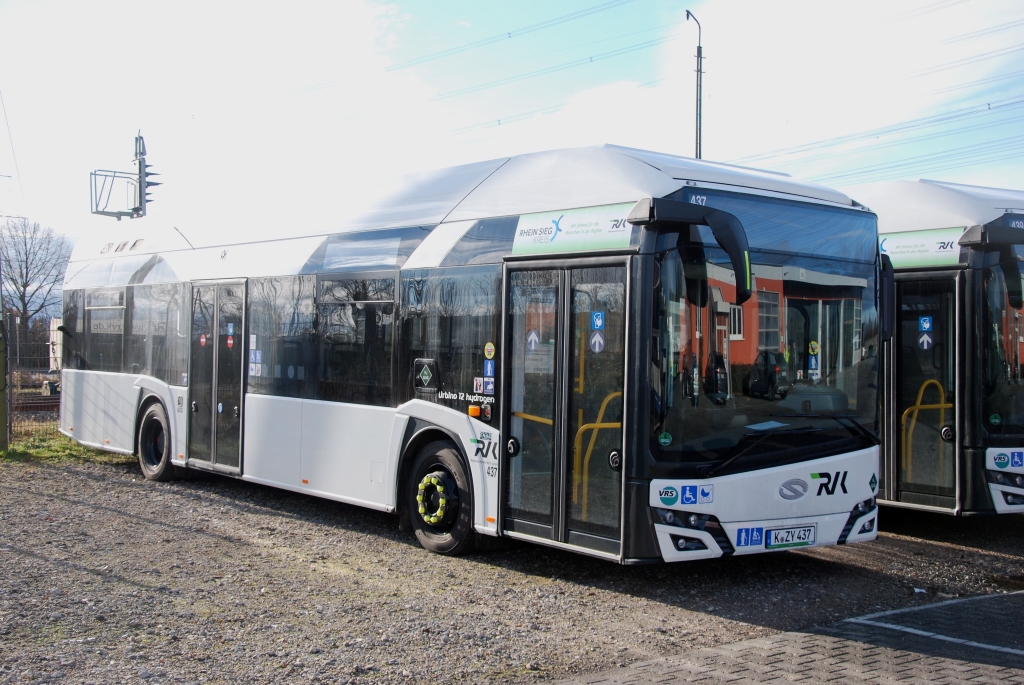
Order placed with Northern Ireland’s Wrightbus
During 2022, RVK surprised with an unusual order: 20 fuel cell buses of the type “GB Kite” were ordered from the Northern Irish company Wrightbus. In addition, there is an option for another 40 buses.
Wrightbus is not an inexperienced manufacturer of fuel cell buses. They have been active in this field for about ten years and have already delivered large numbers to the British market and the Republic of Ireland. So they know in Ballymena (Wrightbus’ headquarters) what a hydrogen bus is and how to build one that works.
However, since Wrightbus was founded 75 years ago (in 1946), it has never built a bus for a country with right-hand traffic order. But that really shouldn’t be a problem.
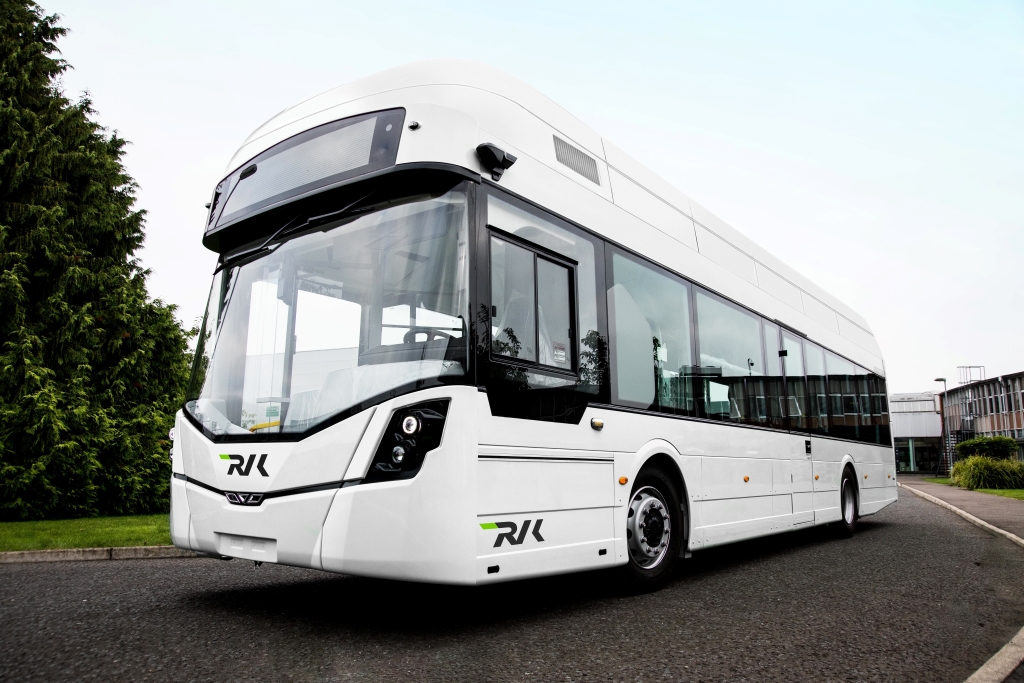
Caetano’s test bus
RVK has already tested three fuel cell demonstration vehicles of the Portuguese manufacturer Caetano. Caetano uses fuel cells from Toyota in Japan. This is rather unusual, actually almost all bus builders use the Canadian manufacturer Ballard.
The first two Caetano were only used on internal test trips, the third one was also operating in regular service, on Bonn‘s express bus line “SB 60” between the main railway station and Cologne/Bonn airport via the A 59 motorway (UTM reported). This line is virtually predestined for fuel cell buses, because each of its courses has a daily mileage of more than 600 kilometres. Battery buses are not yet ready to do that. The hydrogen bus, which also runs on electricity, can do it easily. And there is a hydrogen filling station at the airport.
After testing RVK was very satisfied with the performance of the Caetano.
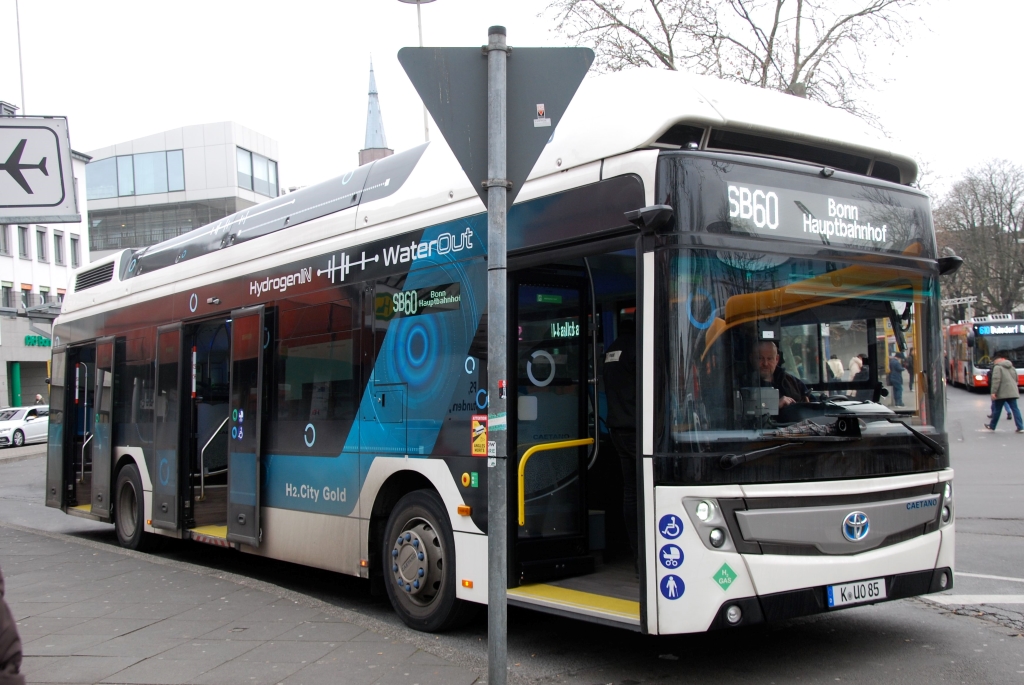
A look at the purchase costs of a hydrogen bus
In her presentation at the “Solaris Talks”, Alisa Meyer also took a look at the purchase costs of a hydrogen bus. While the two Phileas still cost 1,860,000 euros each in 2011, the price for the two Van Hool New A 330 FC of 2014 already dropped to 850,000 euros per bus. That’s already less than half, and in only three years. Van Hool of 2020 were already only 590,000 euros per busr, and in the meantime the price for a hydrogen bus is down to 500,000 euros.
04.01.2023
